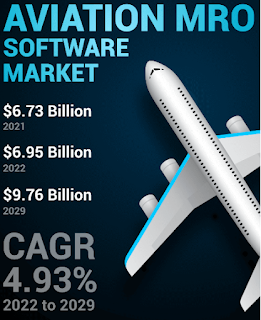Space Semiconductor Market Share, Trends, Demand, Business Outlook and Forecast by 2028
The global space semiconductor market size is expected to gain momentum by reaching USD 3.34 billion by 2028 while exhibiting a CAGR of 6.89% between 2021 to 2028. In its report titled “Space Semiconductor Market, 2021-2028,” Fortune Business Insight mentions that the market stood at USD 2.01 billion in 2020. The increasing space research and development activities in emerging economies in recent years is expected to generate traction. Moreover, the increasing investment in space exploration programs by the government and private organizations is expected to boost the market growth during the forecast period. For instance, in 2021, the U.S. government assigned around USD 23.3 billion for NASA. This has increased by 3 % as compared to last year, and proposed.
Get Request a Sample PDF Brochure:
https://www.fortunebusinessinsights.com/enquiry/request-sample-pdf/space-semiconductor-market-105223
COVID-19 Impact
The ongoing COVID-19 pandemic situation has adversely impacted the market. As, there was disruption in supply chain. This led to slow operations of market players, thereby resulting halt of many ongoing projects. Moreover, due to COVID several launches were delayed and many governments reduced the budget to manage the COVID emergency. However, the market is expected to revive during the forecast period.
Market Segmentation:
By type the market is divided into radiation hardened grade, radiation tolerant grade, and others. By component the market is segmented into integrated circuits, discrete semiconductors devices, optical device, microprocessor, memory, sensors, and others. By application it is divided into satellite, launch vehicles, deep space probe, and rovers and landers. Finally, based on region, the market is categorized into North America, Europe, Asia Pacific, the Middle East & Africa and Rest of the World.
What does the Report Provide?
This market report provides a detailed analysis of several factors such as the key drivers and restraints that will impact growth. Additionally, the report provides insights into the regional analysis that covers different regions, contributing to the growth of the market. It includes the competitive landscape that involves the leading companies and the adoption of strategies to introduce new products, announce partnerships, and collaboration to contribute to the market growth.
Driving Factor
Development of Radiation Tolerant Grade Semiconductor to Fuel Market Growth
The focus on development of radiation-hardened grade and radiation tolerant grade semiconductor solutions by companies such as Teledyne Technologies Incorporated, Texas Instruments Incorporated, Infineon Technologies AG, Microchip Technology Inc. (Microsemi Corporation), and TE Connectivity is expected to promote the space semiconductor market growth. For instance, in June 2021, Microchip Technology Inc. launched its novel GMICP2731-10 GaN MMIC power amplifier using GaN-On-Silicon Carbide (SiC) technology and ideally for satellite terminals. This new technology helps in maintaining signal fidelity by allowing Earth stations to transmit at high RF levels without compromising the quality of the signal.
Get Customized PDF Reports: -
https://www.fortunebusinessinsights.com/enquiry/customization/space-semiconductor-market-105223
Regional Insights
North America to Dominate Backed by Presence of Commercial Space Organizations
North America is expected to remain at the forefront and hold the highest position market during the forecast period. This is attributable to involvement of NASA in numerous space-related operations in the United States. Moreover, presence of commercial space organizations such as Space have fueled the regional market. The region’s market stood at USD 0.86 billion in 2020.
Europe is expected to show significant space semiconductor market share owing to the active involvement of European Space Agency in development of of next-generation space materials and components.
Competitive Landscape
Key Players to Focus on New Launches to Strengthen their Market Prospectus
The global market for space semiconductor devices contains a large number of prominent companies that are constantly trying to develop unique devices to cater to the demand from patients across the globe. To do so, they are joining hands with local or reputed firms, launching new solutions to strengthen their portfolio in the market. Below is a recent industry development:
- May 2021 – Infineon Technologies AG launched its next-generation radiation-hardened 144Mbit QDR-II+ SRAM for radar, onboard data processing, and networking applications in space. This new technology is QML-V, certified. It is the highest quality and reliability standard certification for aerospace-grade ICs.
Inquire Before Buying:
https://www.fortunebusinessinsights.com/enquiry/queries/space-semiconductor-market-105223
List of Key Players Profiled in Report
- Teledyne Technologies Incorporated (U.S.)
- Infineon Technologies AG (Germany)
- Texas Instruments Incorporated (U.S.)
- Microchip Technology Inc. (U.S.)
- Cobham Advanced Electronic Solutions Inc. (U.K.)
- STMicroelectronics International N.V. (Switzerland)
- Solid State Devices Inc. (U.S.)
- Honeywell International Inc. (U.S.)
- Xilinx Inc. (U.S.)
- BAE System Plc (U.K.)
- TE Connectivity (Switzerland)


Comments
Post a Comment